SSL Certificate Monitoring: A Vital Component of Website Security
Are you concerned about the security of your website or online business? Do you want to ensure that your customers can trust your site and transact with you safely? If so, then you need to know about SSL certificate monitoring!
SSL certificate monitoring is the process of continuously monitoring SSL certificates for potential vulnerabilities or incidents, such as certificate revocation or expiration, and other security issues.
By monitoring SSL certificates in real-time, website owners can detect and resolve issues before they cause website downtime or security breaches.
In this blog, we will dive deep into the world of SSL certificate monitoring, discussing its importance and benefits, the different types of SSL certificates, and how to effectively monitor SSL certificates.
Let's get started!
Table of Contents
- What are SSL Certificates?
- What is SSL Certificate Monitoring?
- Why is SSL Certificate Monitoring Important?
- How does SSL Certificate Monitoring Work?
- What is SSL Certificate Incident?
- How to monitor SSL certificates using Atatus?
- Benefits of SSL Monitoring
What are SSL Certificates?
An SSL (Secure Sockets Layer) certificate is a digital certificate that provides a secure and encrypted connection between a web server and a user's browser. SSL certificates are used to protect sensitive information, such as login credentials, credit card numbers, and other personal information during online transactions.
An SSL certificate contains information about the website, such as the domain name, the company or organization that owns the website, and the expiration date of the certificate. The certificate also includes a public key, which is used to encrypt data sent between the user's browser and the web server.
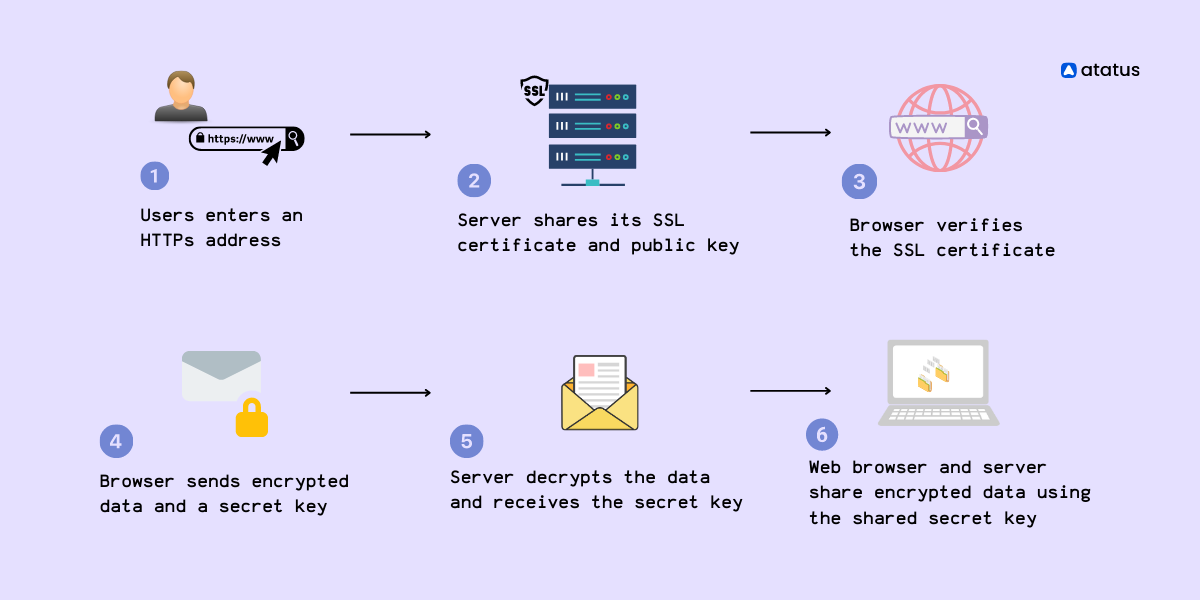
When a user visits a website with an SSL certificate, their browser checks the certificate to ensure it is valid and issued by a trusted Certificate Authority (CA). If the certificate is valid, the browser establishes an encrypted connection with the web server, which protects the user's information from being intercepted by hackers or other third parties.
The SSL protocol has been replaced by the more secure TLS (Transport Layer Security) protocol, but the term SSL certificate is still widely used to refer to both SSL and TLS certificates.
Types of SSL Certificates
There are several types of SSL (Secure Sockets Layer) certificates available, each designed to meet different security and business needs. Here are some of the most common types of SSL certificates:
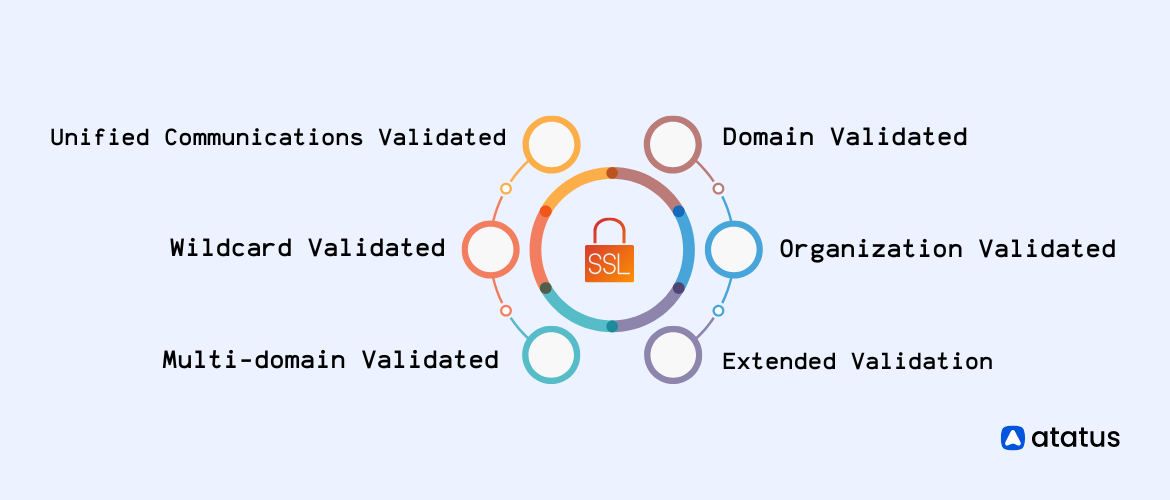
1. Domain Validated SSL certificate
A Domain Validated SSL certificate is the most basic type of SSL certificate. It verifies only that the person or organization requesting the certificate has control over the domain name associated with the SSL certificate. They provide the least amount of assurance to website visitors since they do not verify the identity of the organization or individual that owns the website. As a result, DV SSL certificates are best suited for personal websites or small blogs that do not deal with sensitive information.
2. Organization Validated (OV) SSL Certificates
Organisation Validated SSL certificates provide a higher level of authentication than Domain Validated SSL certificates by requiring additional validation steps. Monitoring Organisation Validated SSL certificates involves checking their expiration date, certificate chain, and verifying the organization details associated with the certificate.
3. Extended Validation SSL Certificates
EV SSL certificates are the most advanced type of SSL certificate. They provide the highest level of security by verifying not only the domain name and organization information, but also conducting a more rigorous validation process to ensure the legitimacy of the website. EV certificates are recognized by the green address bar and are recommended for large organizations, e-commerce websites, and financial institutions.
4. Multi-Domain SSL Certificates
Multi-Domain SSL certificates can cover multiple domain names, making them a cost-effective solution for websites with multiple domains. Monitoring Multi-Domain SSL certificates involves checking their expiration date, certificate chain, and verifying the domain names associated with the certificate.
5. Wildcard SSL Certificate
A wildcard SSL certificate is a type of SSL certificate that allows you to secure a main domain and all its subdomains with a single certificate. The certificate is issued to .domain.com, where the asterisk () is a wildcard character that can match any subdomain.
For example, if you have a website with the domain name example.com, a wildcard SSL certificate for *.example.com would secure all subdomains, such as mail.example.com, shop.example.com, and blog.example.com.
6. Unified Communications (UC) SSL Certificate
UC SSL certificates are commonly used in Unified Communications (UC) environments, where multiple communication services, such as email, voice, video conferencing, instant messaging, and collaboration tools, are integrated into a single platform. These certificates allow for secure communication between different services within the same UC environment.
Unlike a Wildcard SSL certificate, which secures all subdomains of a single domain, a UC SSL certificate can secure multiple, unrelated domains and hostnames. For example, a UC SSL certificate can secure mail.example.com, voip.example.com, and collaboration.example.com, as well as the IP addresses associated with these services.
What is SSL Certificate Monitoring?
SSL certificate monitoring is the process of regularly monitoring and verifying the validity and security of SSL certificates on a website. SSL certificates are digital certificates that enable secure communication between a web server and a web browser, ensuring that sensitive information are transmitted securely over the internet.
When you visit a website that requires you to enter sensitive information like your credit card number or personal details, you want to make sure that your information is transmitted securely and cannot be intercepted by hackers.
SSL certificates help ensure the security of the website by encrypting the information that is being transmitted between the website and your device.
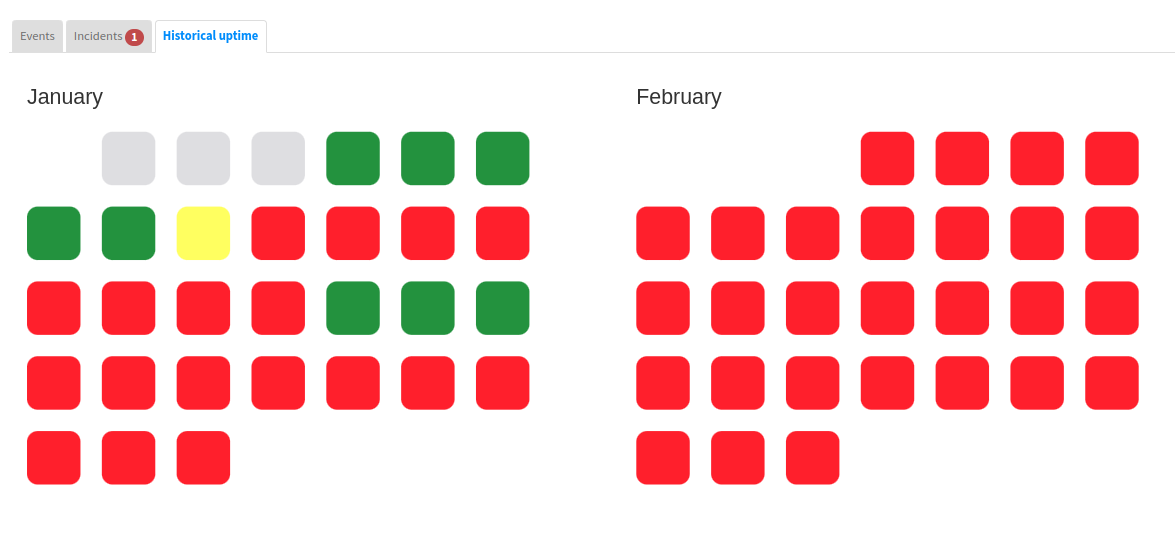
Automated vs Manual SSL Certificate Monitoring
Manual monitoring involves checking the SSL certificate status periodically, either by visiting the website and checking the certificate information or by using online SSL certificate checker tools. This process can be time-consuming and requires human effort, especially if you have multiple websites to monitor.
Automatic SSL certificate monitoring, on the other hand, uses specialized tools and services that regularly check the SSL certificate status and send alerts if any issues are detected. These tools can also automate the renewal and installation process of SSL certificates, making it a more efficient and hands-off process. However, this method can be more expensive.
However, the best choice depends on the specific needs of your website and your available resources. If you have a small website with only a few pages and limited budget, manual monitoring may be sufficient. if you have a larger website with many pages and sensitive data to protect, automated SSL certificate monitoring is the more reliable and efficient option.
Why do SSL Certificates Expire?
- SSL certificates expire to ensure the continued security of websites and their users.
- SSL certificates contain information about the website owner's identity and the certificate's validity.
- When an SSL certificate expires, the information contained in the certificate is no longer considered reliable.
- SSL certificates typically expire after a certain period of time, such as one year or two years.
- Website owners must periodically renew their SSL certificates to ensure their website remains secure and the information transmitted between the server and the client remains encrypted.
- Failure to renew an SSL certificate can result in sensitive information such as passwords, credit card numbers, and other personal data being exposed to potential attackers.
- SSL certificate expiration can also ensure website owners regularly review and update their security practices.
Why is SSL Monitoring Important?
SSL monitoring is essential for several reasons:
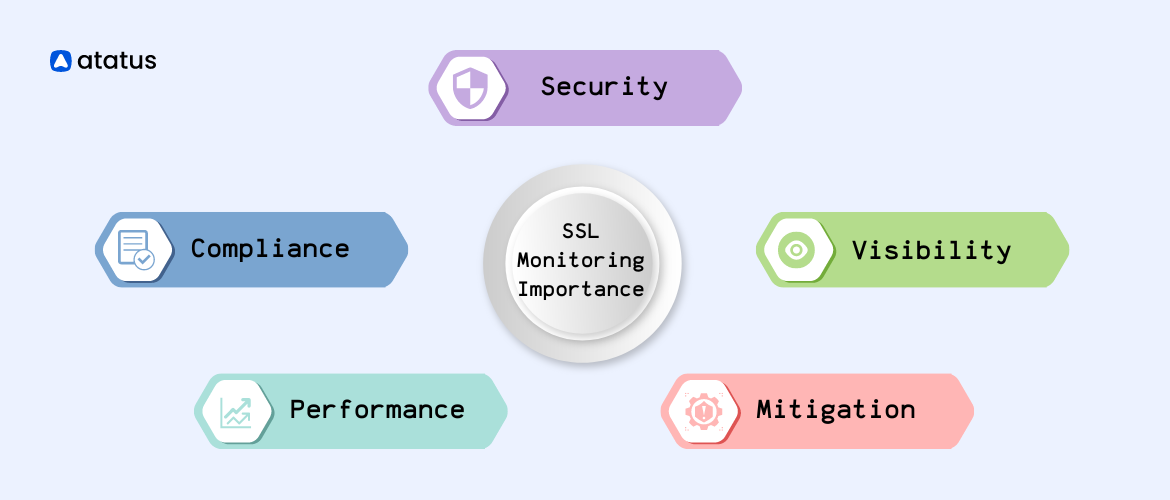
- Security: SSL monitoring helps to ensure the security of websites and web applications by detecting and reporting potential security threats, such as malware and phishing attacks.
- Compliance: SSL monitoring is essential for compliance with regulatory requirements, such as PCI DSS and HIPAA, which require using SSL to protect sensitive data.
- Performance: SSL monitoring can help to optimize the performance of SSL-enabled applications by identifying and resolving issues related to SSL certificate expiration, configuration errors, and other issues that can cause slow page load times and other performance problems.
- Visibility: SSL monitoring provides visibility into SSL traffic, enabling network administrators to quickly identify and troubleshoot SSL-related issues.
- Mitigation: SSL monitoring helps organizations quickly mitigate SSL-based attacks, such as man-in-the-middle (MITM) attacks, by identifying and blocking the attack's source.
How does SSL Monitoring Work?
The SSL certificate is installed on the web server, and a chain of trust is established between the certificate and the certificate authority. The SSL certificate monitoring system is set up to send automated HTTP requests at a pre-defined frequency to the specified URL.
When an HTTP request is sent to the URL, the web server responds with its SSL certificate. The monitoring system checks the SSL certificate to ensure that it's valid and has been issued by a trusted CA. The SSL certificate is also checked for its expiration date to ensure that it hasn't expired.
If the SSL certificate is found to be invalid or has expired, the monitoring system starts an SSL certificate incident, which alerts the relevant team or person. The monitoring system sends alerts, typically via email or SMS, to the relevant person or team on the on-call calendar. The alert message will contain details about the SSL certificate issue, such as the reason for the incident and the URL that is affected.
Once an alert has been received, the relevant team or person can troubleshoot the issue by identifying the root cause of the problem and taking appropriate actions. Once the SSL certificate has been renewed and the configurations have been updated, the SSL certificate incident is resolved, and the monitoring system stops alerting.
How to monitor SSL certificates using Atatus?
You can monitor SSL certificates using Atatus monitoring tool by following these steps:
Step 1: Log in to your Atatus account and navigate to the "Synthetic" tab.
Step 2: Click on "New check" in the right corner of the dashboard and choose "New API/Web Check".
Step 3: Choose Request Type as SSL.
Step 4: Enter the host name. The default port number is set to 443, but it can also be changed. Enter the API Check name to identify the specific check you are performing, such as "SSL API Check". Optionally, add tags to the API check to group it with other related checks or to filter results based on specific criteria.
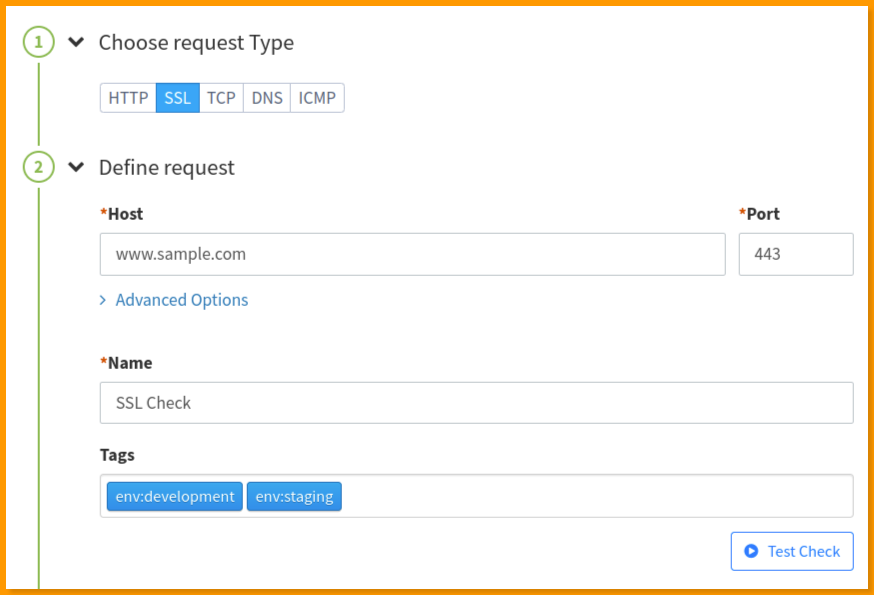
Step 5: Based on the request type you select, there will be some predefined assertions. Besides that, you can also create custom assertions by clicking on the "Add assertion button", which helps you to determine whether a check has been successful.
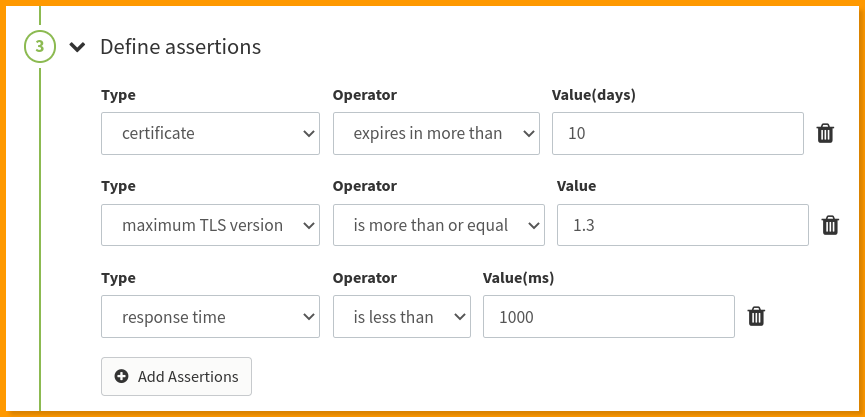
Step 6: You can either select all location or you can choose any particular location to check from the given location.
Step 7: Select the run type
- Parallel: Runs the check on all locations parallely.
- Sequential: Runs the check at each location specifically.
Step 8: Specify the test frequency on how often the test should be performed.

Step 9: Define the alert conditions based on the number of retries to be done when an failure occurs.
Step 10: Set up the notification channel and notify your team about the expiration of the SSL certificate.
Step 11: Click on "Create New Check" and start monitoring your SSL certificate.
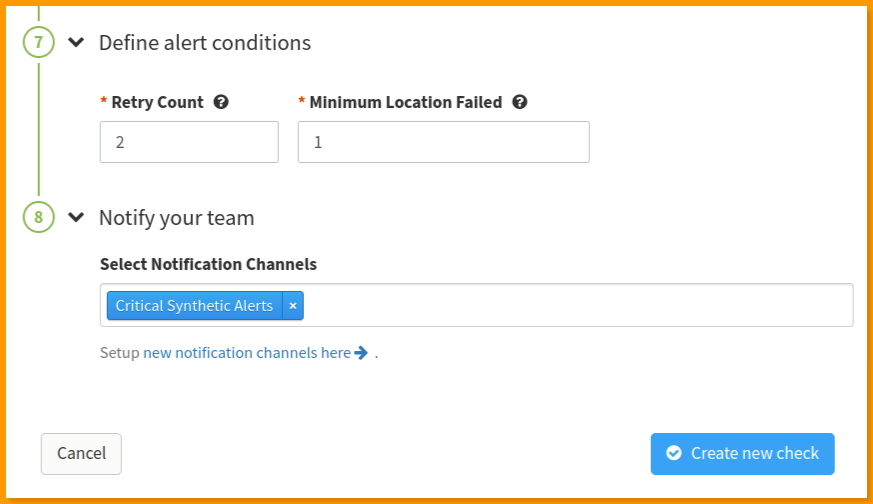
What is SSL Certificate Incident?
An SSL certificate incident refers to a situation where a website's SSL certificate has expired, become invalid, or has been revoked. It triggers an automated monitoring system to alert the website owner or IT team responsible for website security.
The alert notifies them that the SSL certificate is no longer valid and needs to be renewed. Failure to address an SSL certificate incident promptly can lead to website unavailability or visitor's personal information being compromised.
It is essential to take SSL certificate incidents seriously and address them immediately to ensure website security and availability.
How to Receive SSL Certificate Incident Alerts?
To receive SSL certificate incident alerts, you can set up automated monitoring tools that periodically check your website's SSL certificate status. These tools can send alerts via email, SMS, or other messaging channels to notify you when an SSL certificate incident occurs.
It is essential to configure SSL certificate monitoring tools to check the validity of SSL certificates regularly, such as every 24 hours or more frequently, depending on the website's security needs. It is also crucial to ensure that the alerts go to the right individuals or teams to ensure prompt resolution of the incident.
Incident Resolution Process
The incident resolution process for SSL certificate monitoring typically involves the following steps:
- The first step is to identify the issue and determine the scope of the incident.
- Once the incident has been identified, the next step is to analyse it and determine the root cause.
- The affected system or service is then isolated or taken offline to prevent further damage or compromise.
- Mitigation steps are taken to address the issue and prevent it from recurring. This may involve renewing or replacing the SSL certificate or taking other actions to secure the system.
- Once the issue has been mitigated, the system or service is restored to its normal state. Finally, a post-incident review is conducted to evaluate the effectiveness of the response and identify opportunities for improvement.
Benefits of SSL Monitoring
- SSL Certificate Monitoring allows for early detection of potential issues before they result in downtime or security breaches.
- It improves website and application availability, ensuring that any SSL issues are promptly resolved.
- Customers can trust the website or application more knowing that SSL issues are promptly resolved, preventing any negative impact on their experience.
- SSL certificate monitoring helps to mitigate the risk of financial loss caused by website downtime or security breaches.
- SSL certificate incidents can be addressed more quickly with SSL certificate monitoring, as alerts are sent in real-time to the relevant stakeholders, resulting in faster response times.
Conclusion
SSL certificate monitoring is a crucial element of website security that demands attention. It allows website owners to constantly scan SSL certificates for potential vulnerabilities, enabling them to improve incident response time, increase their security posture, and build customer trust.
SSL monitoring can also mitigate the risk of financial loss arising from website downtime or security breaches. Although SSL certificate monitoring has some disadvantages such as cost, false alarms, and complexity, the advantages outweigh them.
Overall, SSL monitoring is a valuable investment in website security that can help protect businesses and their customers from potential harm. In today's highly competitive business landscape, website downtime or security breaches can lead to significant financial and reputational damage. Therefore, investing in SSL certificate monitoring can be a wise decision for businesses of all sizes.
Monitor your website using Atatus Synthetic Monitoring
Atatus Synthetic Monitoring ensures uptime, identifies regional issues, tracks application performance, and manages SLAs and SLOs by monitoring your applications, API endpoints, and critical business flows via simulated user requests.
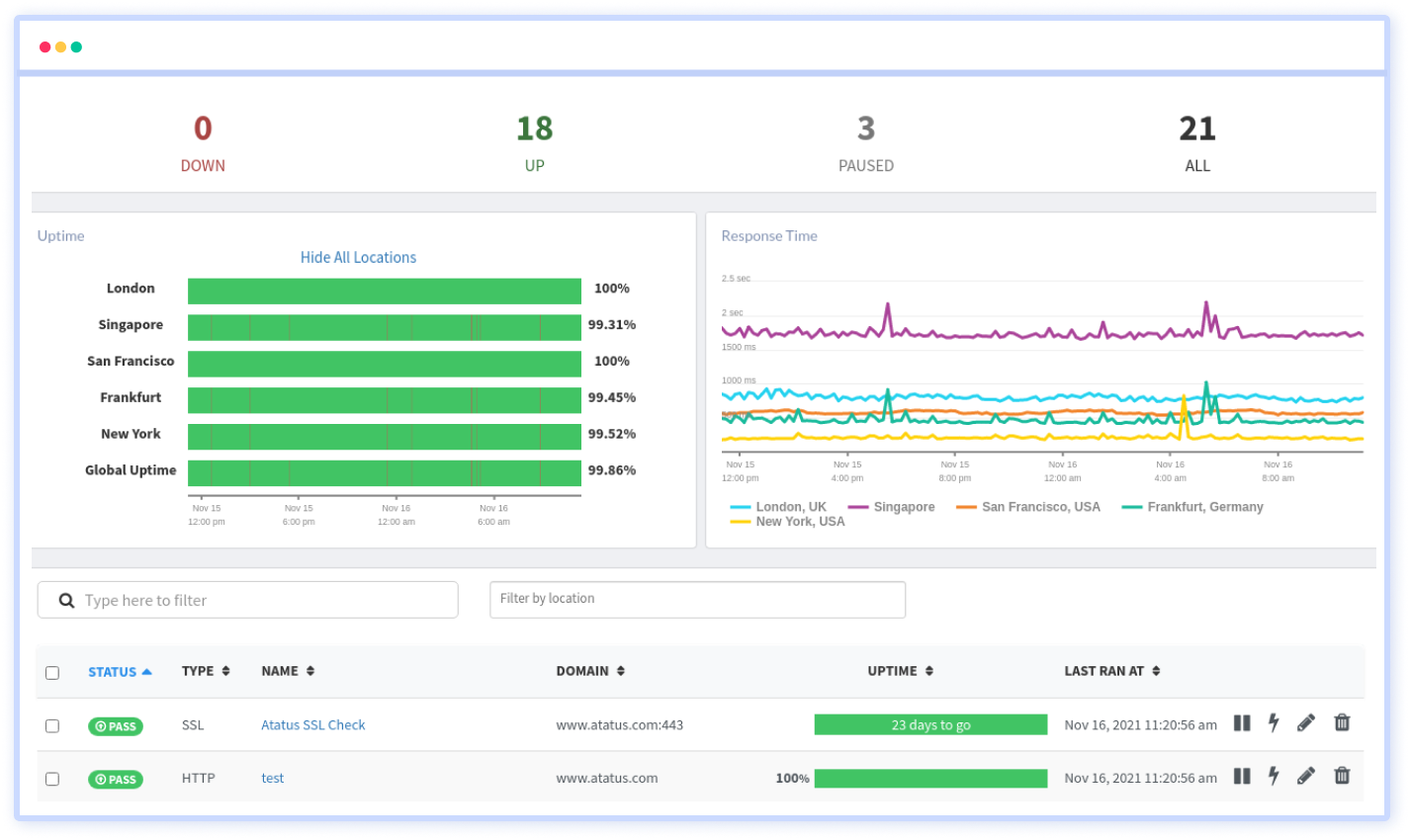
Atatus monitors the performance of your webpages and APIs in a regulated and steady manner, from the backend to the frontend, and at multiple network levels, warning you in the event of erroneous behavior such as regression, broken feature, high response time, unexpected status code, and so on.
#1 Solution for Logs, Traces & Metrics
APM
Kubernetes
Logs
Synthetics
RUM
Serverless
Security
More


